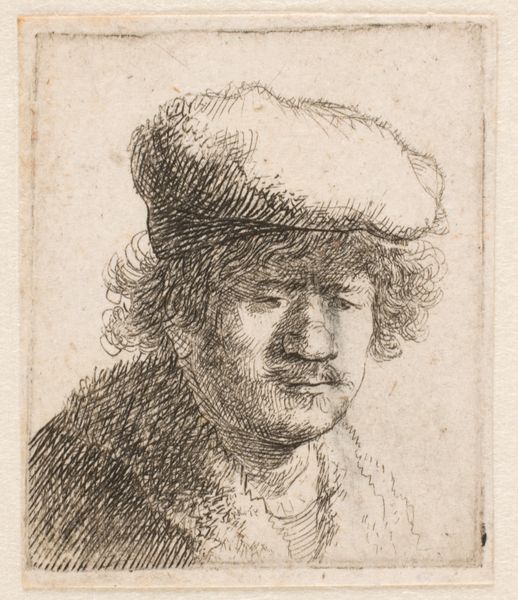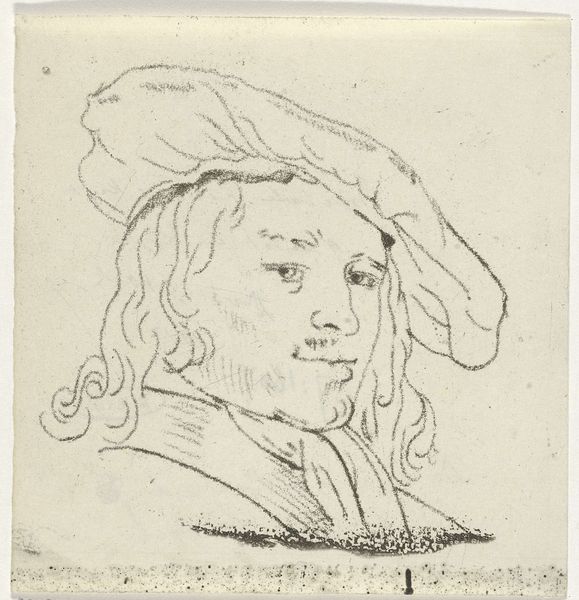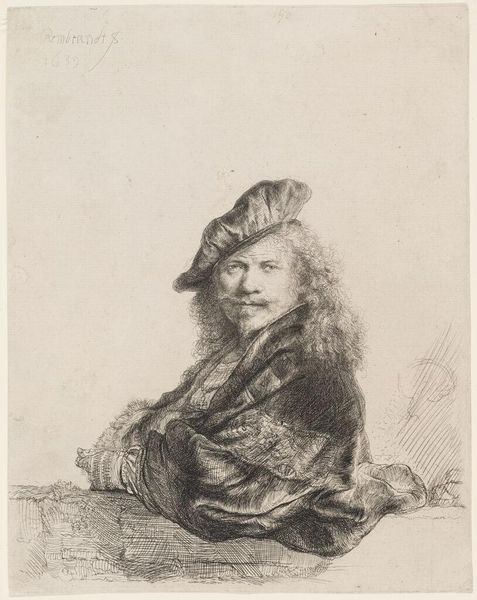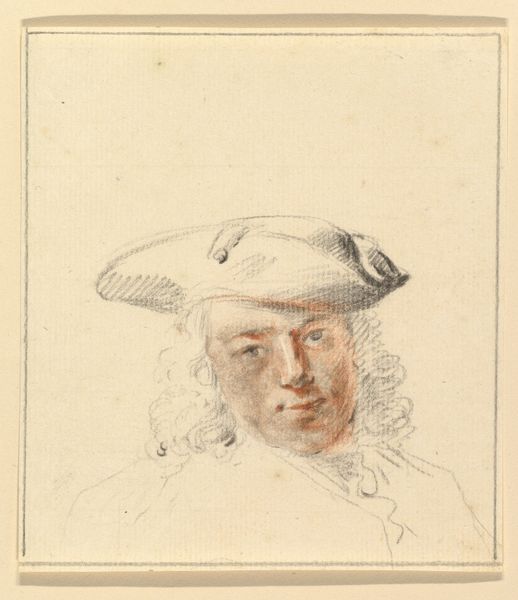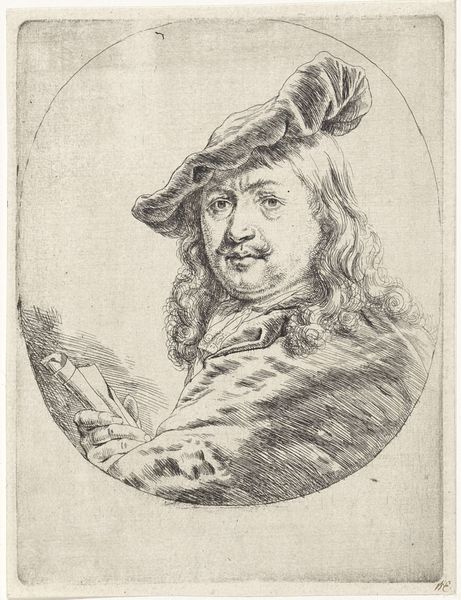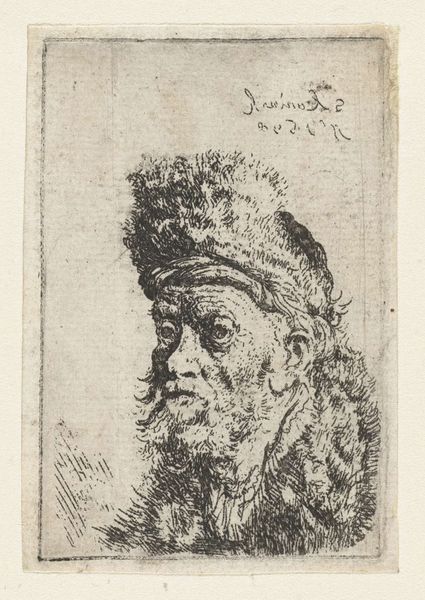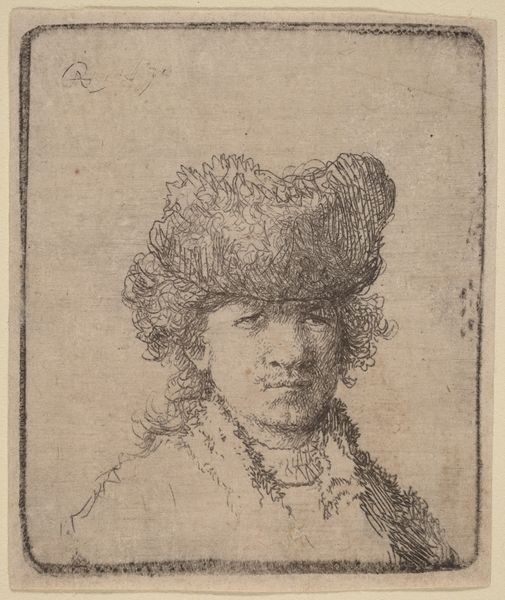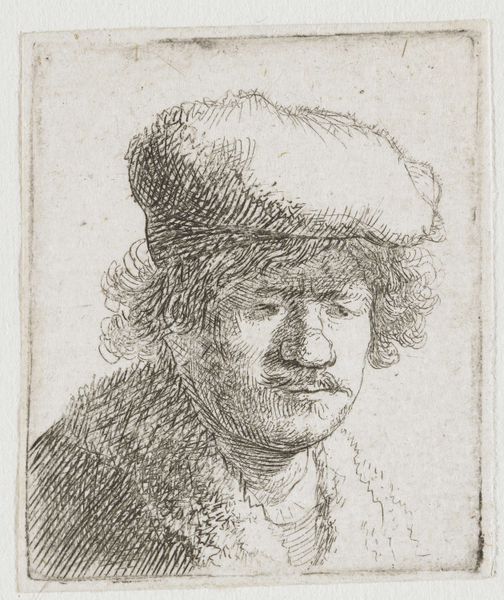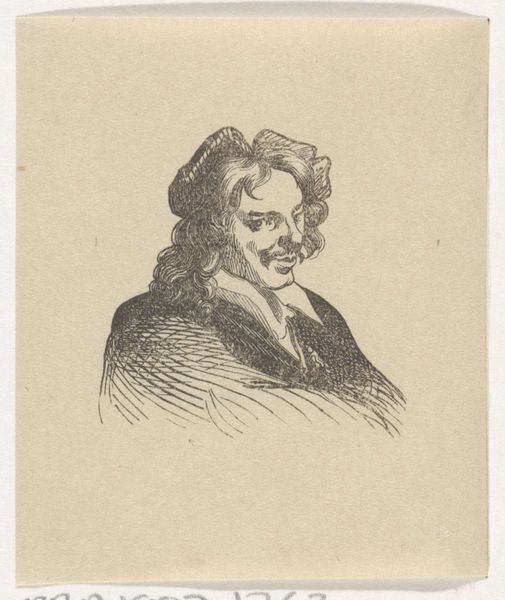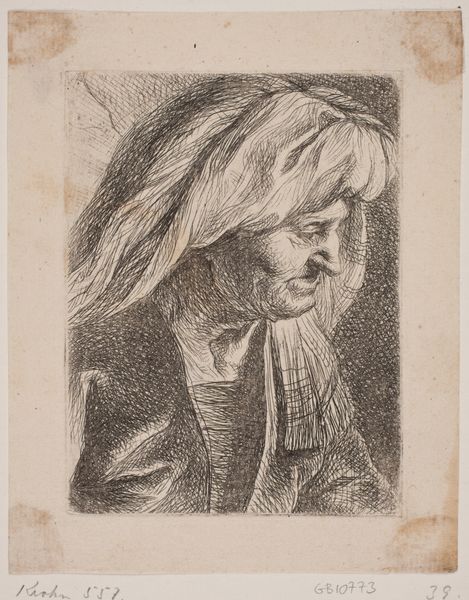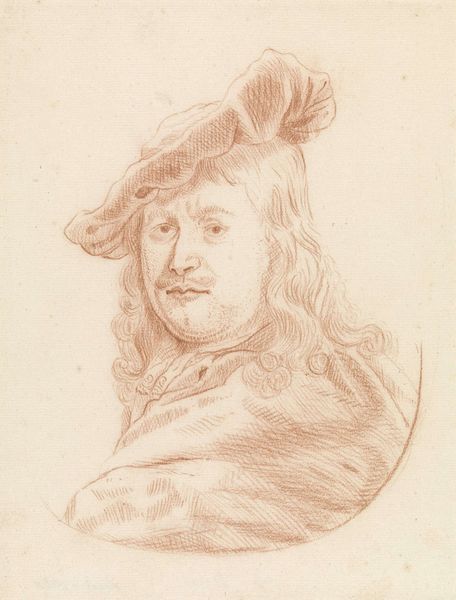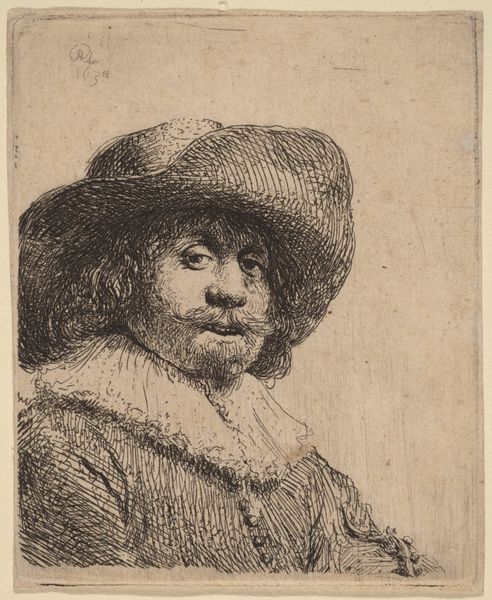
etching, intaglio, engraving
#
portrait
#
baroque
#
etching
#
intaglio
#
engraving
Dimensions: height 161 mm, width 140 mm
Copyright: Rijks Museum: Open Domain
Editor: Here we have "Portrait of Rembrandt with a Cap and Collar," made sometime between 1708 and 1779. It's an etching, an intaglio print. There's something both intimate and world-weary in his gaze. What jumps out at you when you look at this print? Curator: The most compelling aspect is the deconstruction of artistic ego and the representation of self. We see Rembrandt, but through the eyes and hands of Honoré Coussin. The print becomes a palimpsest of artistic identities across time. Coussin's choice to revisit Rembrandt speaks volumes about the Dutch master's lasting influence and raises critical questions about authenticity and the act of homage. Do you see the ways in which Coussin both mimics and departs from Rembrandt's characteristic style? Editor: I do. It's like a conversation across centuries. Coussin seems to be both reverent and analytical. What about the wider historical context? How does this fit into art production in the 18th century? Curator: Consider the rise of the print market and the democratization of art. This wasn’t a unique phenomenon. By reinterpreting a famous image, Coussin tapped into that market but he was also participating in the discourse around artistic genius and national identity. What’s also interesting to consider is the notion of the artist as a brand in both the 17th and 18th centuries. Editor: So it’s more than just a portrait, it’s a statement? Curator: Precisely! It uses the image of Rembrandt, and asks what happens to that image when viewed from a different context. And what does it mean that an artist decides to depict another artist, almost 100 years after the fact? What do you make of that tension? Editor: That's fascinating. I had initially approached this as simply a copy, but it feels like a dialogue. It definitely changes my perspective on historical portraits. Curator: It allows us to consider portraits and copies through the lenses of cultural memory, artistic legacy, and the economics of art, showing just how complex even the seemingly simplest images can be.
Comments
No comments
Be the first to comment and join the conversation on the ultimate creative platform.

